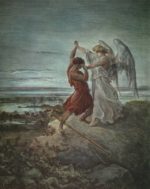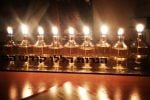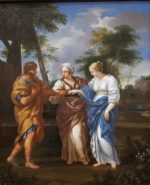Zealotry and Mercy: Parallels Between Pinchas and the War in Gaza
Zealotry and Mercy: Parallels Between Pinchas and the War in Gaza The biblical story of Phinehas (Heb. Pinḥas or Pinchas) presents a complex moral scenario
Zealotry and Mercy: Parallels Between Pinchas and the War in Gaza The biblical story of Phinehas (Heb. Pinḥas or Pinchas) presents a complex moral scenario

So the present passed over before him; and he himself lodged that night in the camp. And he rose up that night, and took his

And every meal-offering of thine shalt thou season with salt; neither shalt thou suffer the salt of the covenant of thy G‑d to be lacking

Then drew near the daughters of Zelophehad …. of the families of Manasseh, the son of Joseph; and these are the names of his daughters:

In a Kabbalistic meditation on lighting Chanukah Menorah, the Arizal links the menorah lights with a supernal river (see Candle on the River). The Arizal’s

Ultimately, I suppose Einstein was right—G‑d does not play dice. So when Haman reached that spiritual level through casting the lots, he discovered the true
And these are the years of the life of Ishmael: one hundred years and thirty years and seven years (Gen. 25,17) You might say the
In the Torah portion Emor (Leviticus 21:1–24:23), we are instructed to abstain from work every seventh day on Shabbat. Next week’s Torah portion, Behar, continues

Reading the Torah, sometimes, can give a false impression of reading a story, albeit the greatest story ever written. This Divine drama involves colorful characters,